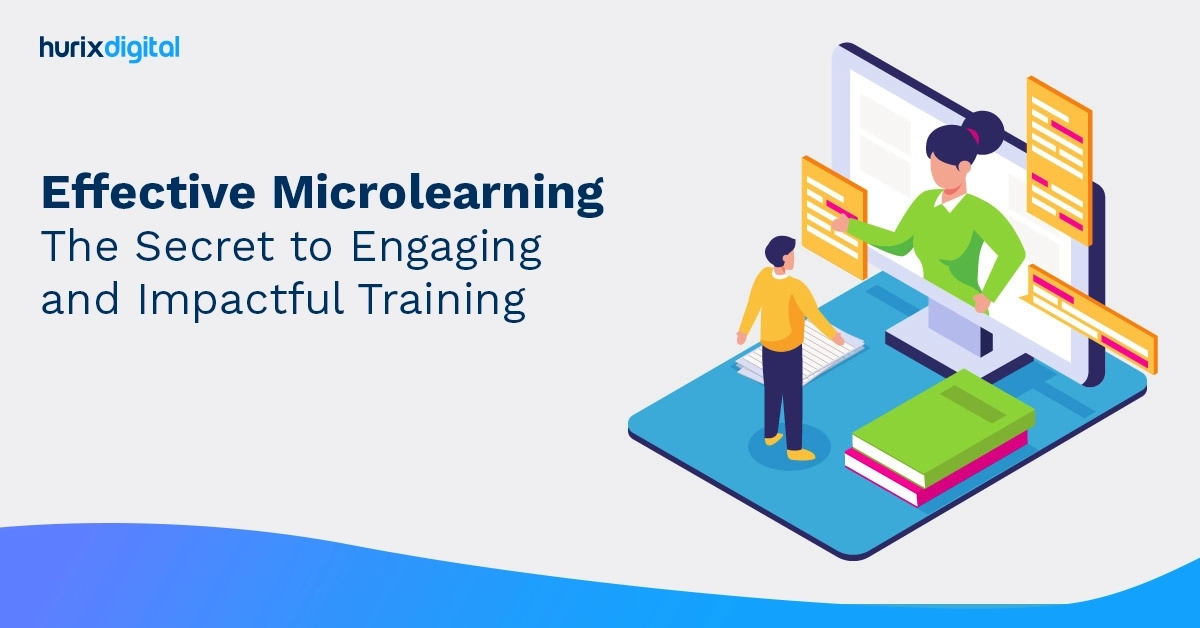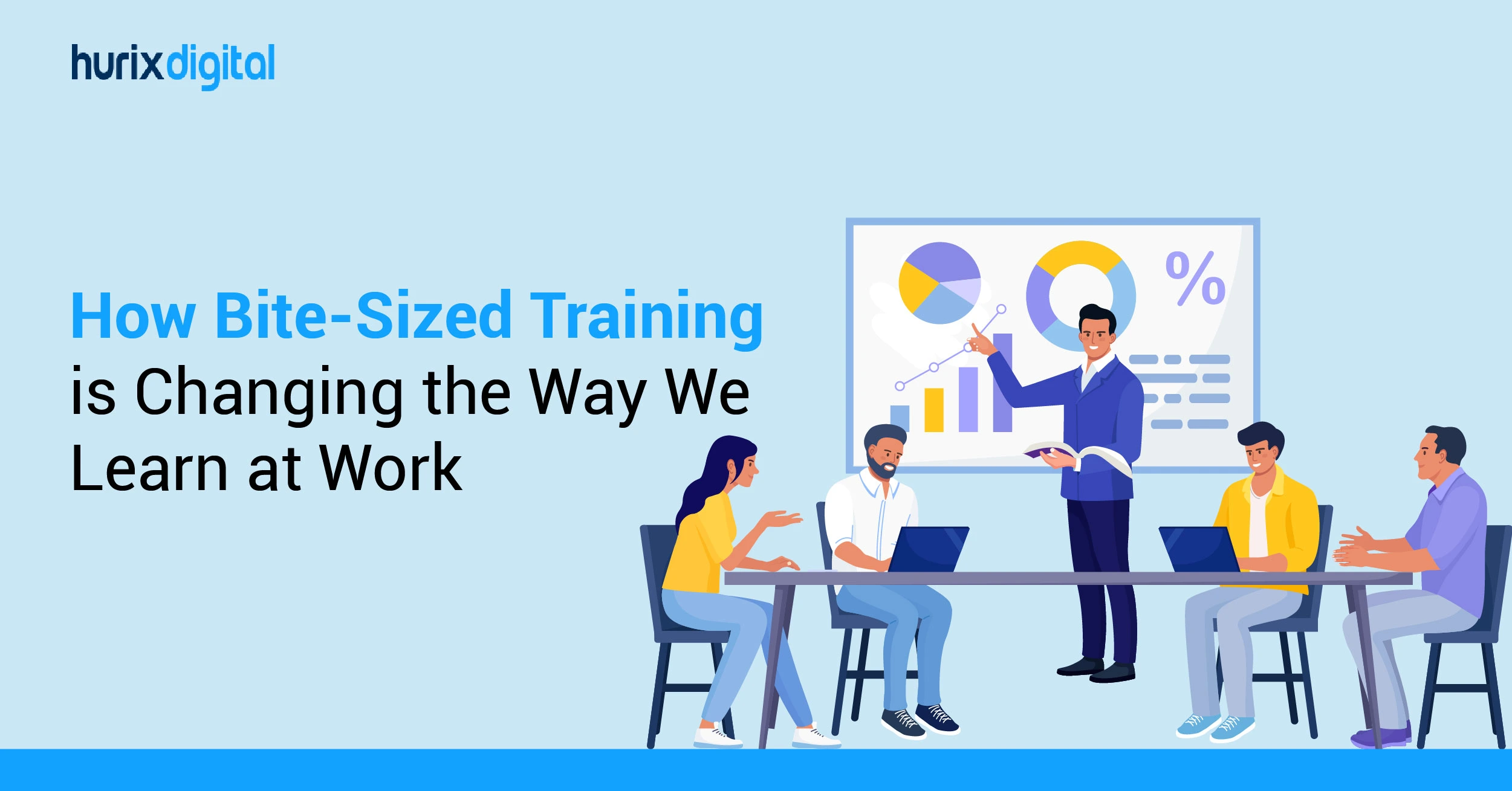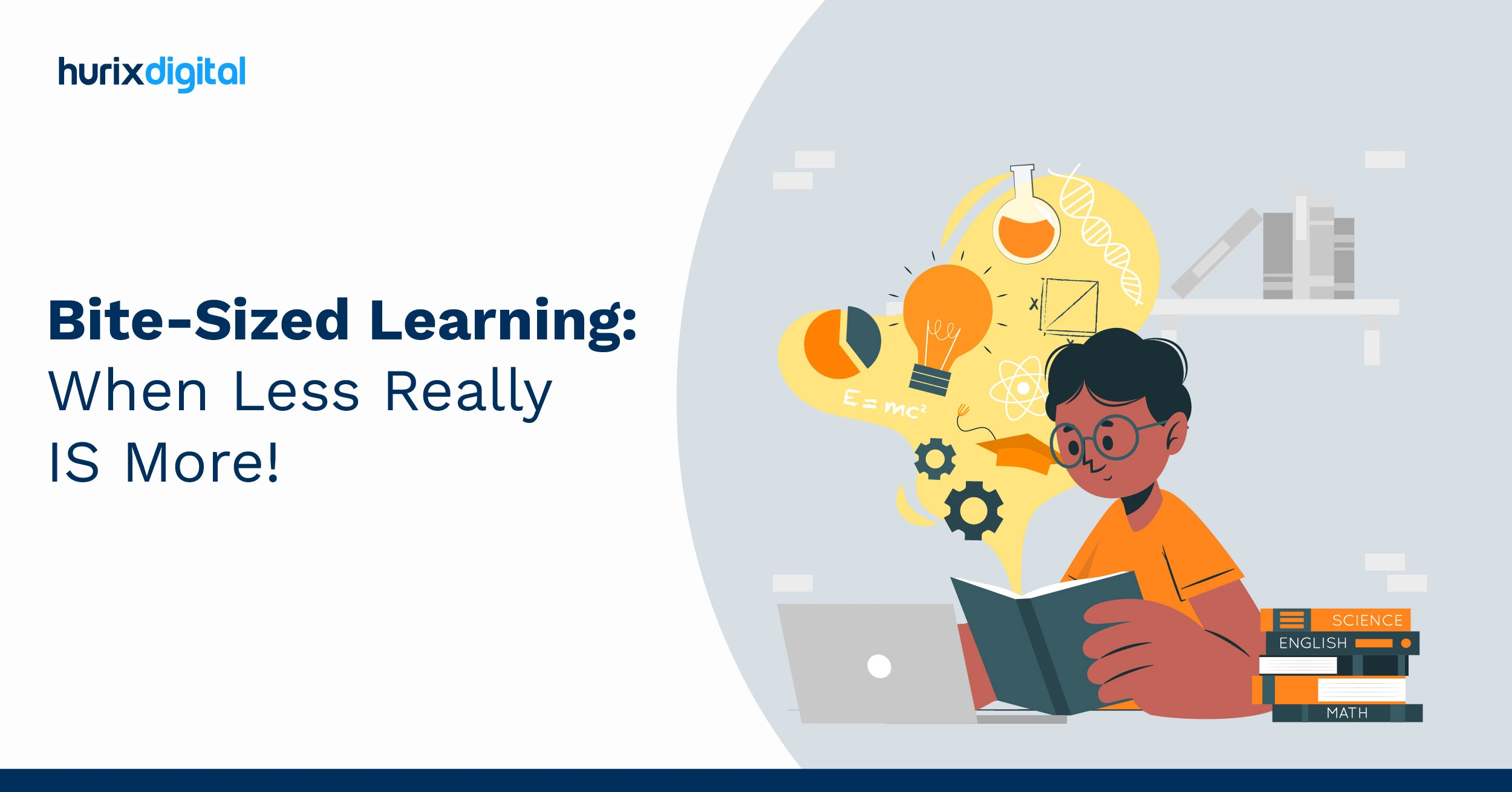
How to Create and Deliver Bite-Sized Learning for Enterprise Training?
Summarize with:
The advent and the ever-increasing use of smartphones have changed the way people access and consume their information, prompting changes in the way learning and training are delivered in organizations.
Training and learning content is increasingly being designed as bite-sized nuggets that people can access and consume on the move, anytime and anywhere, on their smartphones or any other platform.
Does bite-sized training content work? 75% of the respondents in a survey said it does. The affinity for bite-sized training content was a trend even before the COVID-19 pandemic, with 27% of retail companies in the US using these strategies. Seven years later, in 2024, these numbers will have only grown for each industry sector.
This blog helps you know what bite-sized learning is, how to choose the correct bite-sized learning platform for you, and the advantages.
Table of Contents:
- Advantages of Bite-Sized Learning for Enterprise Training and Learning & Development (L&D)
- Examples of Bite-Sized Training Content
- Creating and Delivering Bite-Sized Learning for Enterprise Training
- Conclusion
Advantages of Bite-Sized Learning for Enterprise Training and Learning & Development (L&D)
Here are some key benefits of offering bite-sized training content to learners:
1. To-the-Point Learning
Bite-sized learning is also known as micro-learning. Each nugget lasts 3 to 5 minutes, so you can’t cram it with much information. The bite-sized learning content answers a specific question, for example, how to remove passwords from your PDF file. The nugget will not provide any contextual information about the subject, like what PDF files are and why they are password-protected. Rather, it will dive right into the topic and take you through the steps involved in permanently unlocking your file. Thus, bite-sized training content does not meander away from the subject under discussion.
Bite-sized content is particularly useful to decision-makers, sales personnel, and other employees who need immediate access to a specific query to support their decision-making.
2. More in Tune with Modern Pedagogical Practices
The millennial generation is spoilt for information. With so many distractions claiming attention, it becomes imperative to provide learning in small bite-sized packages that attention-challenged and time-challenged learners can consume and assimilate in a short time frame.
3. Multisensory Learning Experience
Since bite-sized learning is very specific and focuses on providing condensed information on a subject, multimedia elements are liberally used to reinforce the concepts.
Let’s go back to the example of removing a password from a PDF file. Bite-sized learning, in this case, can be in the form of a video demonstrating the process, audio in the background explaining how it is done, and then a list of the steps to reinforce the process.
So, with bite-sized content, you can see learning in action, which improves grasping and retention.
Also Read: Designing Personalized Learning Pathways for your Workforce
4. Reinforcing Learning
It is generally observed that people tend to forget the entirety of what they have learned over 30 days if that information is not revisited or put to use again and again. Bite-sized learning simplifies revisiting the concepts and thus is a great way to address the challenges of the forgetting curve.
Also, since these bite-sized nuggets are specific and in formats that include graphics, audio, video, infographics, etc., they are less intimidating to the learners than long lessons in the text-only format.
5. Personalized Learning
Bite-sized learning nuggets are focused on answering specific queries, implying that organizations can harness them to provide personalized learning experiences. This will create more interest in learning, enabling employees to upgrade their skills.
Besides, this form of learning also helps to provide a more level playing field to all team members, who may otherwise not be able to follow lessons in traditional settings at the same pace or with the same level of understanding.
6. Empowering Learners
Micro-learning or bite-sized content nuggets are empowering for learners as they can learn at their own pace and gain answers to their specific queries when they want the answers or information. Thus, bite-sized learning is a great performance support tool, allowing learners to perform their jobs better, convert a lead into a sale, or make the right decision at the right time.
7. Exploring New Horizons
As mentioned earlier, bite-sized learning is very content-specific in that each nugget encapsulates very condensed information about a particular subject. While this may hold good for the learner who is challenged for time, there might be other moments when the users have time at hand, and they may want to further increase their knowledge on the subject.
Micro-learning fully utilizes technology, linking bite-sized learning content to various digital networks, communities, and content resources that the learners can use to build on their knowledge further.
Examples of Bite-Sized Training Content
Here are some common bite-sized learning examples and formats that are used for enhancing digital learning and achieving better engagement and effectiveness:
1. Microlearning Modules
Microlearning modules are short pieces of learning that usually cover knowledge on a single topic. These modules range between 3 and 10 minutes so that learners absorb a significant amount of material without feeling overwhelmed. For example, an interactive training module of 5 minutes on the world economy might cover only one topic. These modules can be designed with interactive elements, such as quizzes, drag-and-drop activities, or scenario-based questions.
2. Short Training Videos
Organizations have started using videos in their bite-sized training content and lessons to make employees better understand complex information. Videos of this nature are 2 to 5 minutes long, which is excellent for delivering a solid summarization to explain procedures, tools, or concepts.
For example, a 3-minute video might provide step-by-step guidelines on using a new software. This training method is highly interactive, particularly for visual learners, and even easy to carry out in the field.
3. Podcasts
Podcasts are the future of learning because they are flexible and convenient. A 10-minute podcast might be an interesting discussion between two experts on great leadership skills.
Podcasts allow learners to absorb content, even when doing other things. As these are hands-free audio learning experiences, they are appropriate for busy learners.
4. Infographics
Infographics are visually appealing and can break down complex data into easy-to-understand graphics. For example, an infographic summarizing the top 5 cybersecurity lessons can help visually communicate crucial information using icons, charts, and short text explanations.
5. Flashcards or Quizzes
Flashcards and quizzes are methods to consolidate information learned.
For example, flashcards quizzing about employment, industrial, or compliance regulations can be used to see how well a learner grasps facts. Digital flashcards are readily accessible from mobile devices and are good for short, quick review sessions. Quizzes allow the learners to review what they’ve learned and improve long-term retention of the most important concepts.
6. Quick-Read Articles
Quick-read articles provide key facts and actionable knowledge that can be quickly acquired and put into practice. Such a format can transmit time-sensitive information to keep the learners up to date without distracting them from their general work tasks.
7. Animated Explainers
An animated explainer is a short, visually-driven video that simplifies complex topics by combining animation with a clear narrative. This makes it easier for the learner to understand and grasp abstract or technical concepts through animation. Such videos also use storytelling to help memorize learning material.
Creating and Delivering Bite-Sized Learning for Enterprise Training
Follow this process to create and deliver effective bite-sized training content:
1. Identify Your Learning Goals
Since bite-sized learning is personalized, it is important to first understand the learning goals—do you want the modules to provide performance support, supplement classroom, online, or ILT learning, or enable informed decision-making? You may also wish to involve your employees in understanding their knowledge gap areas and creating nuggets more suited to their needs.
2. Keep it Short
Bite-sized learning content should be concise, not more than 3 to 5 minutes. Focus on one idea at a time and ensure that the information you provide is complete, such that it answers all learners’ queries. They don’t have to wade through unnecessary information to find what they seek. This holds for performance support and decision-making.
The other reason to keep it short is that the learners can go through these nuggets during their free time – between meetings, coffee breaks, or commuting. Provide links to social media, online communities, and other content resources so that they can look for additional information if they require it or connect with other members for discussions.
3. Understand Your End-learners’ Learning Styles
Once again, empower your employees to understand what type of technology they are most comfortable with to deliver bite-sized learning. You can harness various media types to create your micro-nuggets, such as audio, video, graphics, infographics, and more advanced ones like animations and simulations.
4. Study Your Design Options
It is a good idea to match the format with the type of content and your budget. You may also talk to your in-house content developers or, if you are outsourcing, to the eLearning content developers about the best formats for your content type.
5. Ensure Usability Across Platforms
People consume their content on all types of platforms – laptops, PCs, tablets, and mobiles, so make sure that your content is easy to access on all platforms and is available both offline and online.
6. Use an LMS to Create Your Bite-Sized Learning Content
Instead of investing in an LMS, you can use third-party LMS solutions to create small bite-sized content and enrich it with various media types. You can also add evaluation tools to understand if your modules meet their requirements and modify your content accordingly for better outcomes.
For the best returns on your investment, thoroughly research the LMS vendors and choose one with a wide experience and, more specifically, in your area of specialization.
Also Read: Measuring the Effectiveness of Translated and Localized Workforce Learning Content
Conclusion
Bite-sized training content caters to the modern learner’s needs and promises flexibility, engagement, and retention. As such, many organizations seek to upskill their trainees and learners efficiently by adopting such an approach.
Hurix Digital provides best-of-the-class cutting-edge solutions for creating interactive and engaging bite-sized training content that is mobile-friendly.
Get in touch today and learn how we can change training for your enterprise!
Summarize with:

 Upcoming Masterclass | Build an Army of Brand Evangelists using Training & Development | November 20th, 8:30 AM PDT | 11:30 AM EDT | 10:00 PM IST
Upcoming Masterclass | Build an Army of Brand Evangelists using Training & Development | November 20th, 8:30 AM PDT | 11:30 AM EDT | 10:00 PM IST




